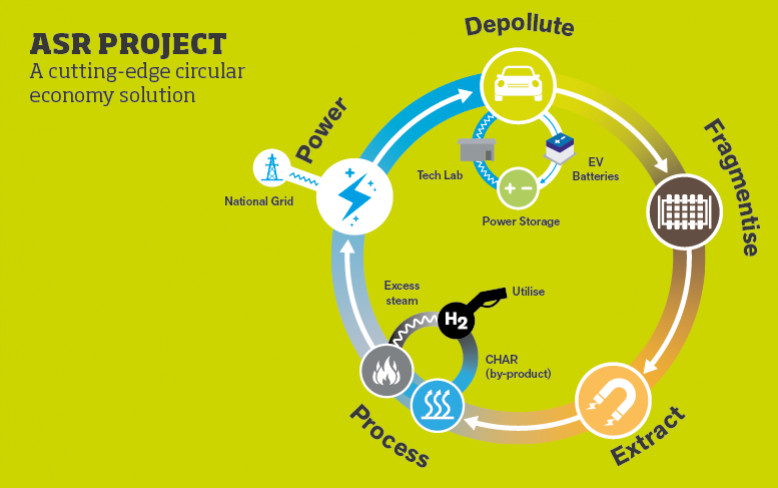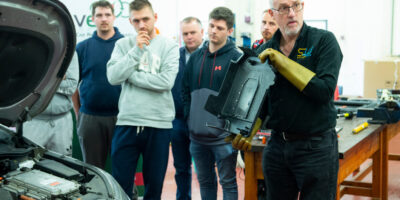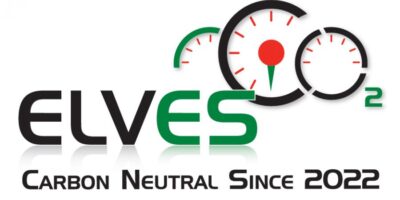
One of the UK’s largest end-of-life vehicle processors, Recycling Lives, is developing a ground-breaking solution that uses hard-to-recycle automotive shredder residue (ASR) to deliver renewable energy and reduce waste-to-landfill.
The move is part of a broader model for the business creating opportunities for generating energy to run site operations and green hydrogen to power emission-free vehicles, alongside re-tasking batteries from end-of-life electric vehicles (EV) for re-use in energy storage.
CEO Gerry Marshall commented, “Recycling Lives has long had an embedded ethos which is to improve society and help reduce environmental damage. This model, sets the scene for a sector transformation away from traditional recycling methods, towards a more innovative approach.”
Ferrous material from end-of-life vehicles is already recovered along with other valuable non-ferrous metals, but the ASR that remains is usually destined for landfill. Recycling Lives plans to reduce the amount of ASR that goes to landfill by diverting clean and graded material through thermal treatment technologies to generate energy at its 15-acre Recycling Park in Preston. Advanced thermal decomposition converts ASR waste into energy and generates by-products (char and combustible syngas). Char can be used to create green hydrogen, while residual char may be applied as a soil modifier, and ash as construction sector aggregate.
Recycling Lives has been trialling an innovative thermal treatment plant, with the aim of having a production model operational in 2022. Amongst other uses, the energy could potentially fuel the latest generation of emission-free vehicles and power site operations.
The final stage of the model will see banks of repurposed batteries from electric vehicles used to store renewable energy produced by the process, and power the purpose-built EV depollution facility at the Recycling Park.
Gerry Marshall, CEO of Recycling Lives added, “This circular economy solution will extract maximum value from ELVs, reducing waste and producing power and green hydrogen, benefiting the wider community and the environment. We are now turning a problem into a positive solution because ASR destined for landfill will instead generate energy, fuels and useful products at the same time saving on landfill levies and the negative environmental impact of landfill.”




Leave a Reply